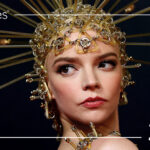Aviation sector contributed AED137 billion to Dubai’s GDP in 2023

Equivalent to 27% of the emirate’s GDP
The aviation sector is proving to be a cornerstone of Dubai’s economic landscape. In 2023, it supported 27% of the emirate’s GDP, equating to AED137 billion. This contribution is projected to rise to nearly one-third of Dubai’s GDP by 2030, underscoring the sector’s pivotal role in the emirate’s growth trajectory.
An economic impact study, released by Emirates Group and Dubai Airports in collaboration with global research firm Oxford Economics, details the aviation sector’s comprehensive influence on the Dubai economy, encompassing not just the direct economic activities of airlines and airports in the emirate but also the indirect effects generated through the sector’s supply chain and the induced economic activities from wage-funded consumption by aviation employees.
Sheikh Ahmed bin Saeed Al Maktoum, Chairman and Chief Executive of Emirates Airline & Group, noted: “Dubai’s aviation sector has been a core pillar of our city’s economic growth strategy to date, and it will continue to play a key role in the D33 Economic Agenda.”
The aviation sector in Dubai is a significant job creator, supporting over 631,000 jobs in 2023, or one in five jobs in the emirate. This number is expected to increase by 185,000 jobs by 2030, bringing the total to approximately 816,000. The core economic impact of the sector alone is estimated at AED94 billion, with an additional AED43 billion stemming from the catalytic effects of tourism facilitated by air travel.
Robust growth
In 2023, the economic contributions of aviation-facilitated tourism reached AED43 billion, contributing around 8.5% of Dubai’s GDP. The forecast indicates a robust growth of over 40% in this sector by 2030, highlighting aviation’s role in enhancing the tourism experience in Dubai.
Dubai is making substantial investments to future-proof its aviation sector and ensure its continued economic viability. This strategy’s key components are significant expansions at Dubai International Airport and the upcoming Dubai World Central – Al Maktoum International Airport.

The new AED128 billion airport is projected to be five times the size of Dubai International. The first phase is expected to be completed in ten years. Upon full completion, this facility will feature over 400 aircraft stands and the capacity to serve 260 million passengers annually.
132,000 jobs
While the expansion of Dubai World Central is not directly included in the recent impact study’s main findings, it is anticipated to contribute AED6.1 billion to Dubai’s GDP by 2030 and create 132,000 jobs. This new infrastructure is aligned with the D33 Economic Agenda, which aims to enhance Dubai’s global trade and tourism position.
Aviation is a vital driver for international tourism in Dubai, one of the world’s most popular destinations. In 2023, visitors to the emirate spent an average of AED4,300 on accommodations, dining, attractions, and shopping for approximately 3.8 nights. The study revealed that international visitors flying into Dubai contributed around AED66 billion to the local economy.
By 2030, tourism-related spending linked to aviation is projected to reach AED63 billion, representing approximately 10% of Dubai’s GDP and supporting one in eight jobs in the emirate. More than half of the gross value added from tourism, estimated at AED23 billion, was generated by passengers flying with Emirates.
The findings from the Oxford Economics study highlight the aviation sector’s critical role in sustaining Dubai’s economy. As the emirate continues to invest in expanding its aviation infrastructure and enhancing air connectivity, the industry is poised for further growth, creating jobs and stimulating economic activity.
However, across the border, Saudi Arabia is steadily challenging this growth and is poised to dominate the aviation sector in the Middle East region in a few years, a role held by Dubai until now.
Featured image: Dubai is making substantial investments to future-proof its aviation sector and ensure its continued economic viability. Credit: Emirates
Last Updated on 3 months by Arnold Pinto












